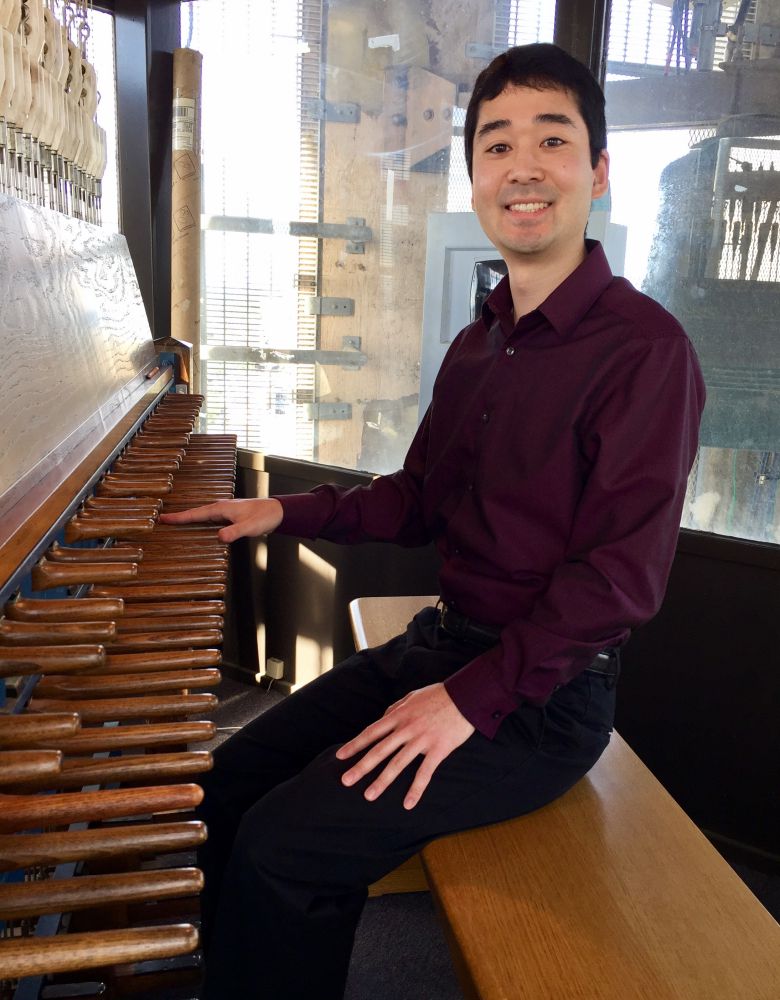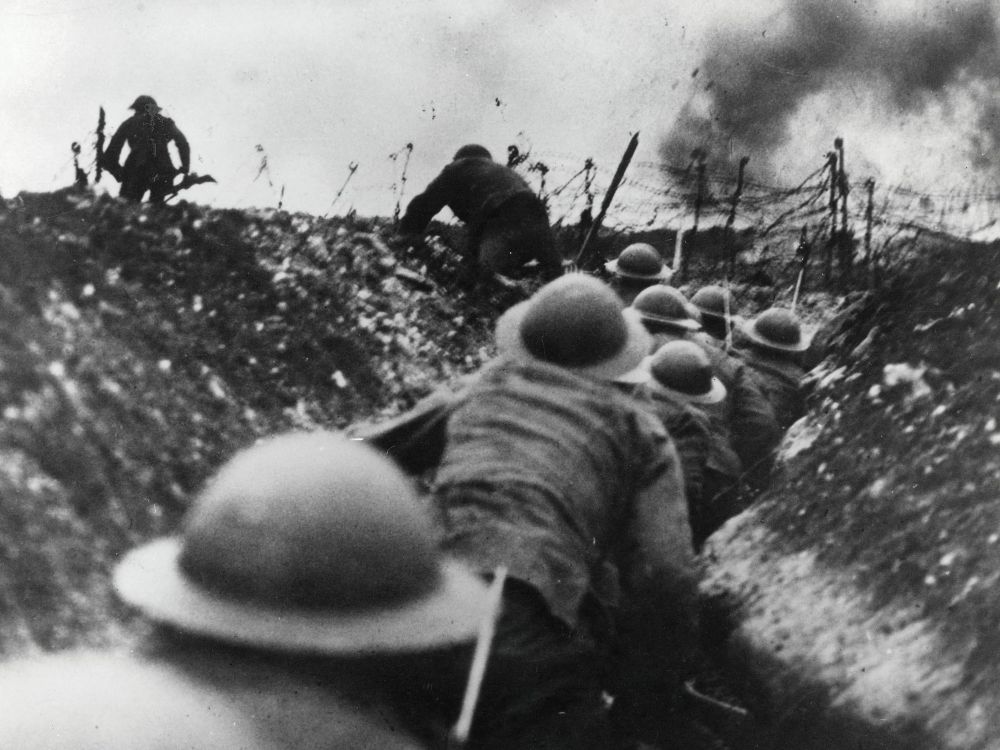For Whom the Bells Toll

World War I was deemed the Great War and “the war to end all wars.” Today we might marvel at the idealism of those who hoped for an end to war. And why not? The war ended 100 years ago and its horrors — upwards of 20 million dead — have faded into grainy black-and-white photos.
“World War I may seem far away, but the war and its consequences remain intimately entwined with our lives today,” said John W.I. Lee, a UC Santa Barbara professor of history. “The 100th anniversary of the war’s end is an opportunity for us to reflect on the terrible experiences of 1914 to 1918 and to renew our commitment to international peace and understanding.”
To commemorate the centenary of the Armistice — signed at “the eleventh hour of the eleventh day of the eleventh month” of 1918 — UC Santa Barbara carillonist Wesley Arai will present a recital on the university’s Storke Tower carillon Sunday, Nov. 11, from 11 a.m. to noon. It is free and open to the public. (Carillon students from Arai’s studio will present a recital Sunday, Dec. 2, from 10 to 11 a.m.)
Arai will perform “A Sacred Suite,” written by renowned carillonist and composer Geert D’hollander. The piece was written for the dedication of a new Peace Carillon in Leuven, Belgium, on the day of the recital. “Carillonists around the world will perform the piece on the same day in a show of solidarity and expression of peace,” he said.
Named university carillonist in fall quarter 2018 to replace the retired Margo Halsted, Arai manages the 61-bell carillon in Storke Tower, built in 1969 and named for Thomas Storke, the influential former publisher of the Santa Barbara News-Press.
“Carillon positions are extremely rare,” Arai said, “especially with UCSB having one of only three carillons in Southern California, so I jumped on the opportunity when it came up. I already live in the Los Angeles area and have been wanting a chance to play the carillon regularly and to teach for a long time, so this position seemed like a great fit.”
Halsted, who managed UCSB’s carillon for 10 years before retiring, called Arai “the perfect person to replace me and I could not be happier that he was chosen.”
Arai, who also teaches carillon to UCSB students, said the Storke Tower instrument is “one of the finest around. The bells, cast in the Netherlands by the Petit & Fritsen bell foundry, have a beautiful sound quality. The carillon has 61 bells, which makes it one of the largest in the world. And I don’t think you can beat the location. The sweeping ocean views from the tower are pretty incredible.”
Arai said he’d like to see the carillon become more integrated into the campus culture. “Even though the Storke Tower carillon has been around for almost 50 years, I don’t think people are really aware of it,” he added. “Some people have probably never heard it and those who have might not know much about it (for example, that it’s played by real people and not a computer). Also, plans are underway for a celebration of the 50th anniversary of the Storke Tower carillon, to take place next September.”
UCSB’s idyllic setting and the passage of 100 years can make WWI seem like an abstraction. But Lee noted that the modern world still lives with the consequences of the war, both here and abroad.
“The war brought the United States into international politics as never before,” Lee said. “The current geopolitics of the Middle East and other regions were greatly shaped by the war and its aftermath. And, the rise of the Soviet Union out of collapsing Tsarist Russia helped define the 20th century.”
At home, he noted, identities in the U.S. were reshaped after the country entered the war, as official propaganda and popular hysteria targeted German immigrants and culture.
“Americans stopped speaking German — one historian’s research shows that in 1915, a quarter of American high schools offered German classes,” Lee noted. “By the end of the war, hardly any offered those classes. The pressure for immigrants, German or otherwise, to assimilate became stronger than ever before. In some ways, the treatment of German Americans presaged the treatment of Japanese Americans in WWII.”
The war also shuffled demographics in the U.S., he said. “Hundreds of thousands of African Americans migrated out of the U.S. South to places such as Los Angeles, New York, Chicago and Detroit, and many more followed after the war, reshaping the nation’s culture and society. Despite segregation, black soldiers contributed enormously to the war effort. In fact, the U.S. Army’s most combat-tested unit was the African American 369th Infantry — the famed ‘Harlem Hellfighters.’ ”
Salim Yaqub, a UCSB professor of history, noted that one of the lessons of the war — which trapped millions of soldiers in a stalemate of death — was to look beyond your own self-interest.
“One thing the World War I experience shows — and this applies to personal relationships as well as to affairs of state — is how crucial it is to consider how things look from your rival’s perspective, and to always give your rival a graceful way to avoid conflict,” Yaqub said.






